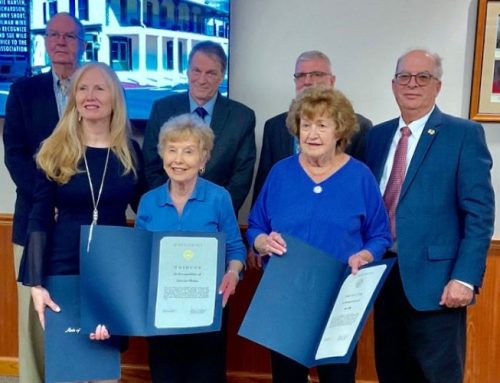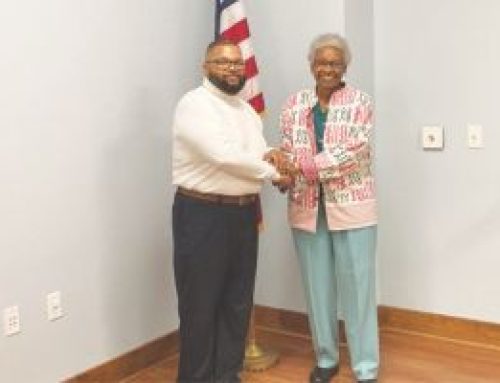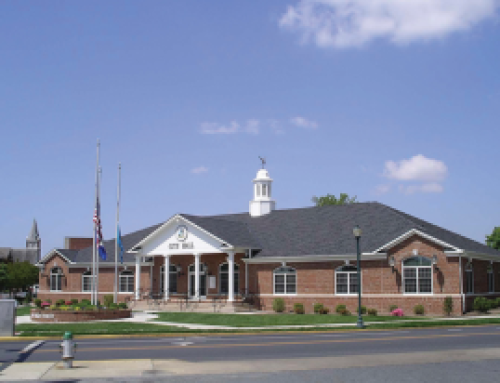Editor’s note: The Seaford Historical Society recently filmed a new documentary about Harriett Tubman’s exploits through Delaware, including Tilly’s escape through Seaford. The following is an account of Tilly’s escape.
In October of 1856, the city of Seaford played a role in an escape of a slave named Tilly. The escape was facilitated by famed Underground Railroad Conductor Harriet Tubman. Getting Tilly safely to freedom would have the duo of Harriet and Tilly traveling local waterways via steamboat, escaping slave traders, and ultimately having Tilly travel from Wilmington to Canada, to reunite Tilly with her fiancé who was living there as a free man. Curator of The Seaford Museum and resident expert on Tilly Jim Blackwell said the daring escape and the events that unfolded “brought Tubman the closest she would have likely ever been at being captured” during her many rescues of slaves.
The plan to gain Tilly her freedom was set into motion long before 1856 when the escape through Seaford takes place. Tilly’s fiancé had previously fled to Canada, sometime in 1848 or 1849, gaining his freedom but having to leave Tilly behind. He began saving his earnings, eventually amassing enough to provide for the safe passage of his fiancée to come and finally be with him.
Fast forward to 1856, and Tilly’s fiancé had contacted Harriet Tubman, famed abolitionist and Underground Railroad Conductor, who aided many other escaped slaves to their freedom. Tubman traveled from her home in nearby Dorchester County (Md.), where she was born and raised, to Baltimore. There, miraculously, she was able to get into contact with Tilly who was hiding from her master, who was attempting to marry Tilly off to another slave. Blackwell speculates “Tilly” may have even been a pseudonym, stating “Harriet may have changed this for safety reasons.”
When Tubman came to Baltimore, she came prepared with a cunning plan, and a simple piece of paper that would allow her to set it into motion. A pass signed by a steamboat captain was in Tubman’s possession, declaring her a “free black woman” living in Philadelphia, allowing her to travel to Northern ports freely. Tilly lacked such a pass. At the time she boarded a steamboat named “Kent” with Tubman. It is here that either through his sympathy to Tilly’s situation, or the possibility of knowing the captain that he had signed Tubman’s pass, the captain of the Kent created a similar document for Tilly.
Both women, passes in hand, travelled aboard the Kent into the Chesapeake Bay, and eventually into its tributary the Nanticoke, leaving Baltimore on Oct. 21, 1856.
It is speculated the pair may have landed in Seaford in what is the site of the Riverwalk present day. Blackwell explains that by traveling south through the Chesapeake, then north through the Nanticoke, the women wouldn’t have to pay a cash bond at Northern ports, a testament that they were free, and not slaves. Blackwell related “$500 a piece would have been required. Probably somewhere around $17,000 a person in today’s money.”
Back on solid ground, Tubman leads Tilly to the Coulbourn Hotel, demanding lodging for the night, as well as food following their trip. The Coulbourn sat where present-day Gateway Park is located in Seaford, situated at the intersections of Market, High, and Front St. This is the site of the Delaware Public Archives historical marker, dedicated in 2014. In 2013 this site was made a location on National Underground railroad “Network to Freedom”. While staying at the hotel, Tubman was able to write Thomas Garrett, another Underground Railroad conductor that would help them on their journey.
The next day the escape is almost foiled as the pair awoke to find slave traders attempting to arrest them. Thankfully, the inn keeper of the Coulbourn was somehow able to thwart the would-be captors, and Tubman and Tilly fled to neighboring Bridgeville either via carriage or by foot.
Once in Bridgeville the pair boarded a steam train, and were able to travel north into Kent County, entering into the town of Camden. William Brinkley, another Underground Railroad conductor, provided them safe passage to prominent abolitionist William Garret’s residence in Wilmington.
This eventually escape into freedom for Tilly, as we know her, was impossible without the quick thinking and wit of Harriet Tubman, set among the backdrop of Seaford. “It’s absolutely amazing that she, Harriet, was able to think of and plan for all of these possibilities that could happen in advance, and low and behold they did right here in Seaford,” said Blackwell.





